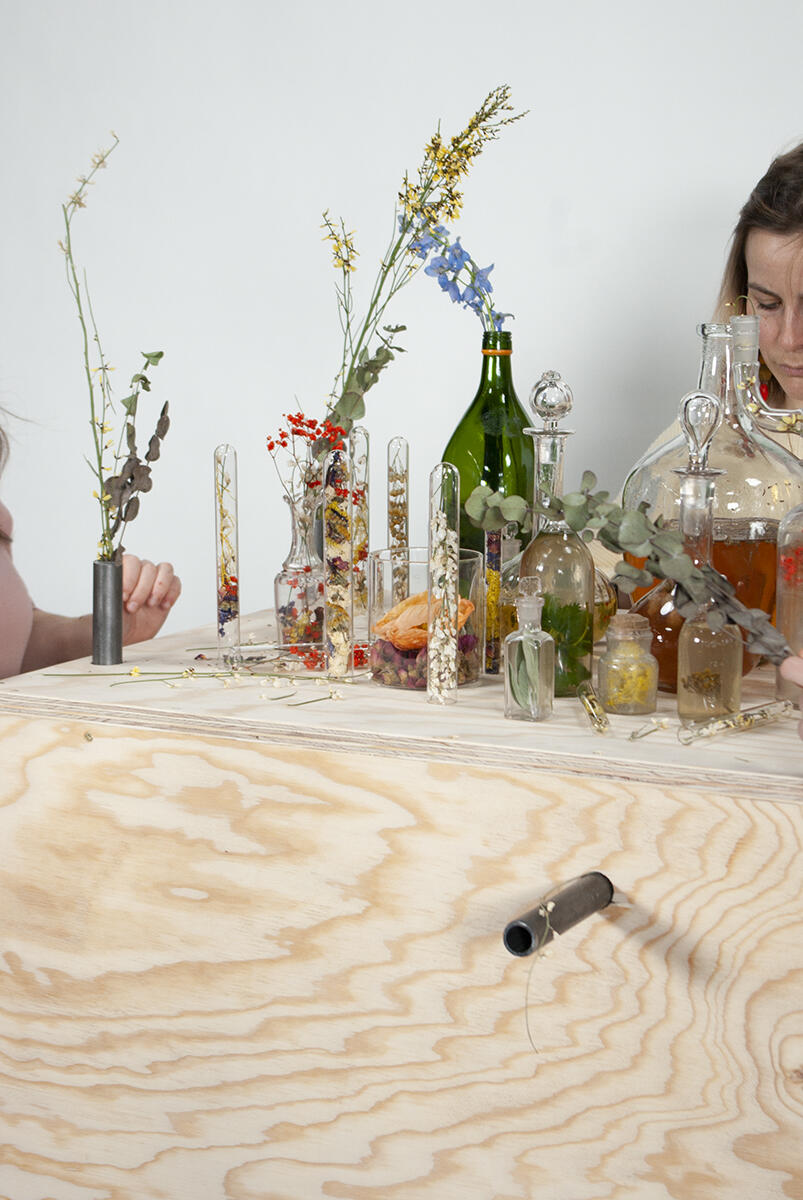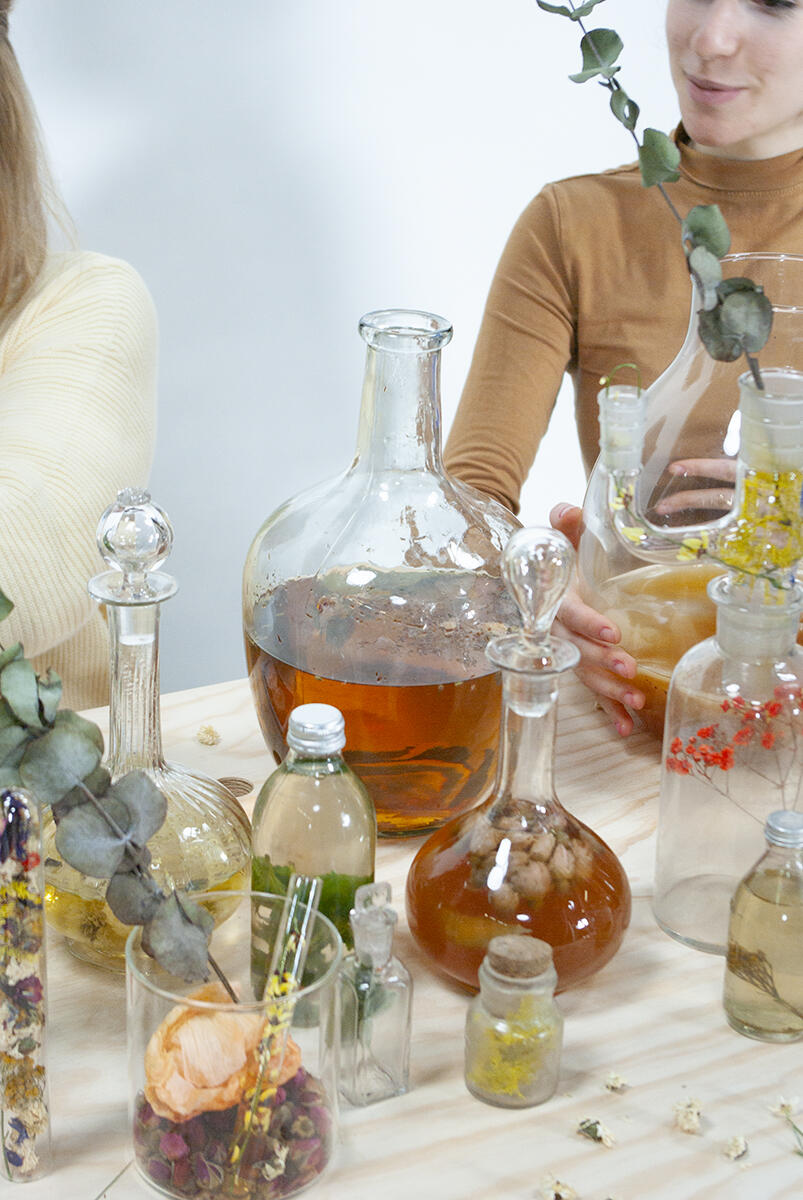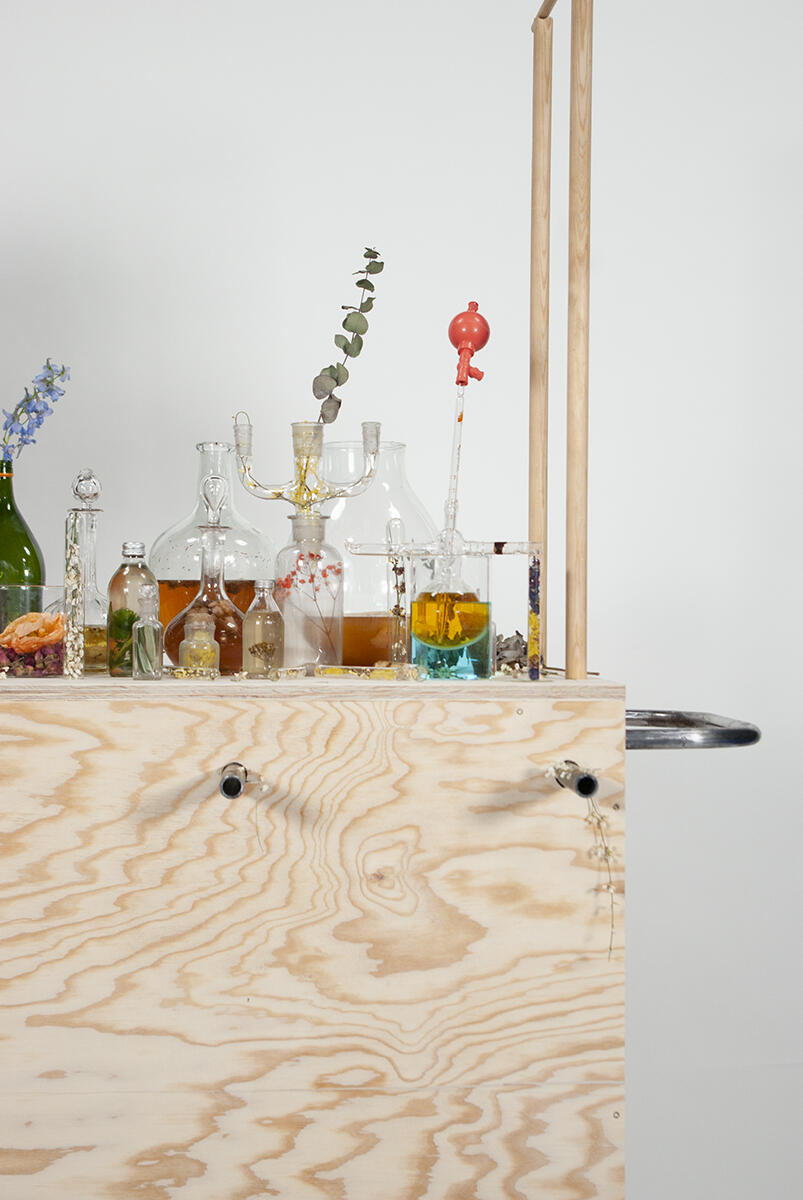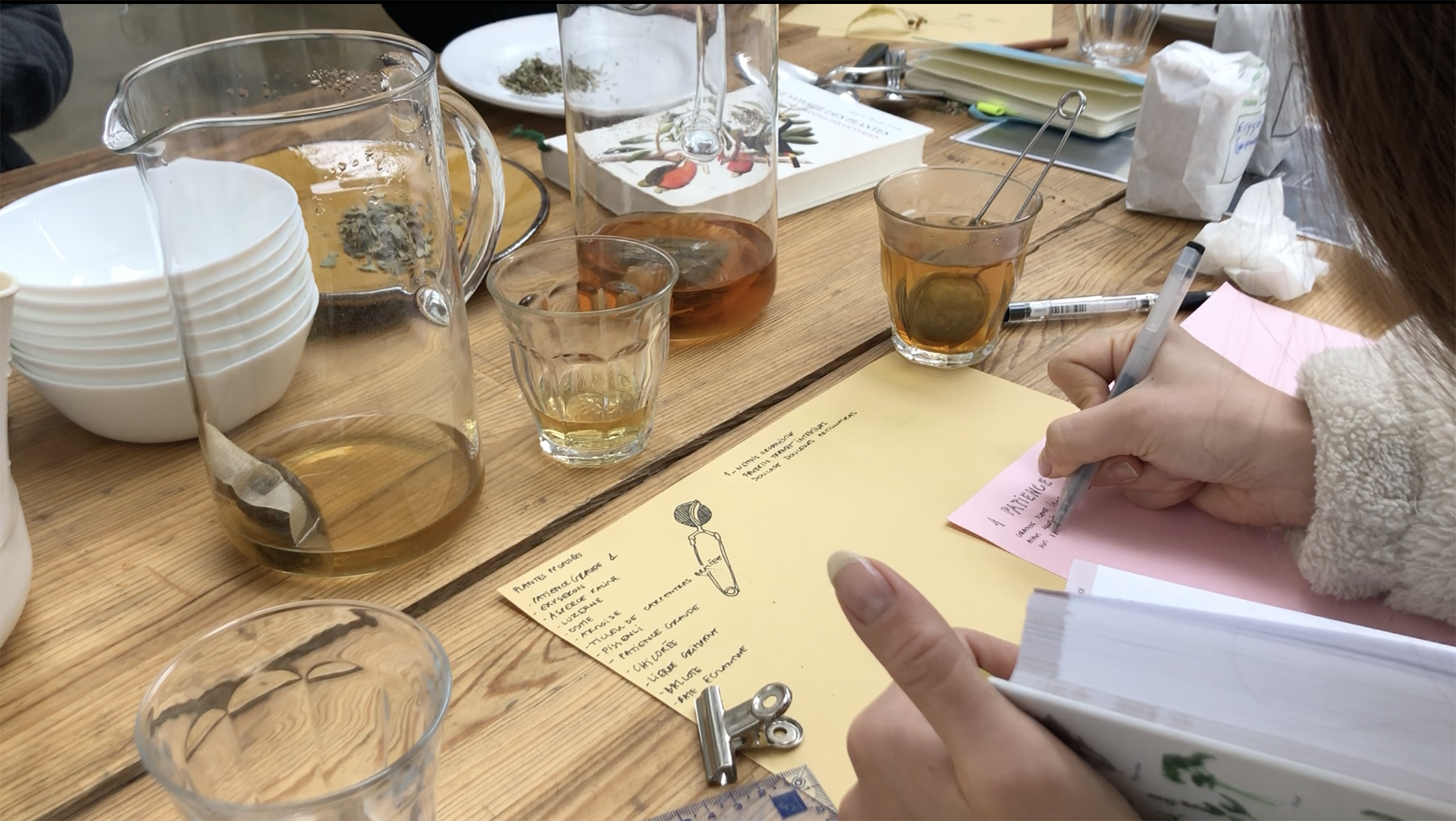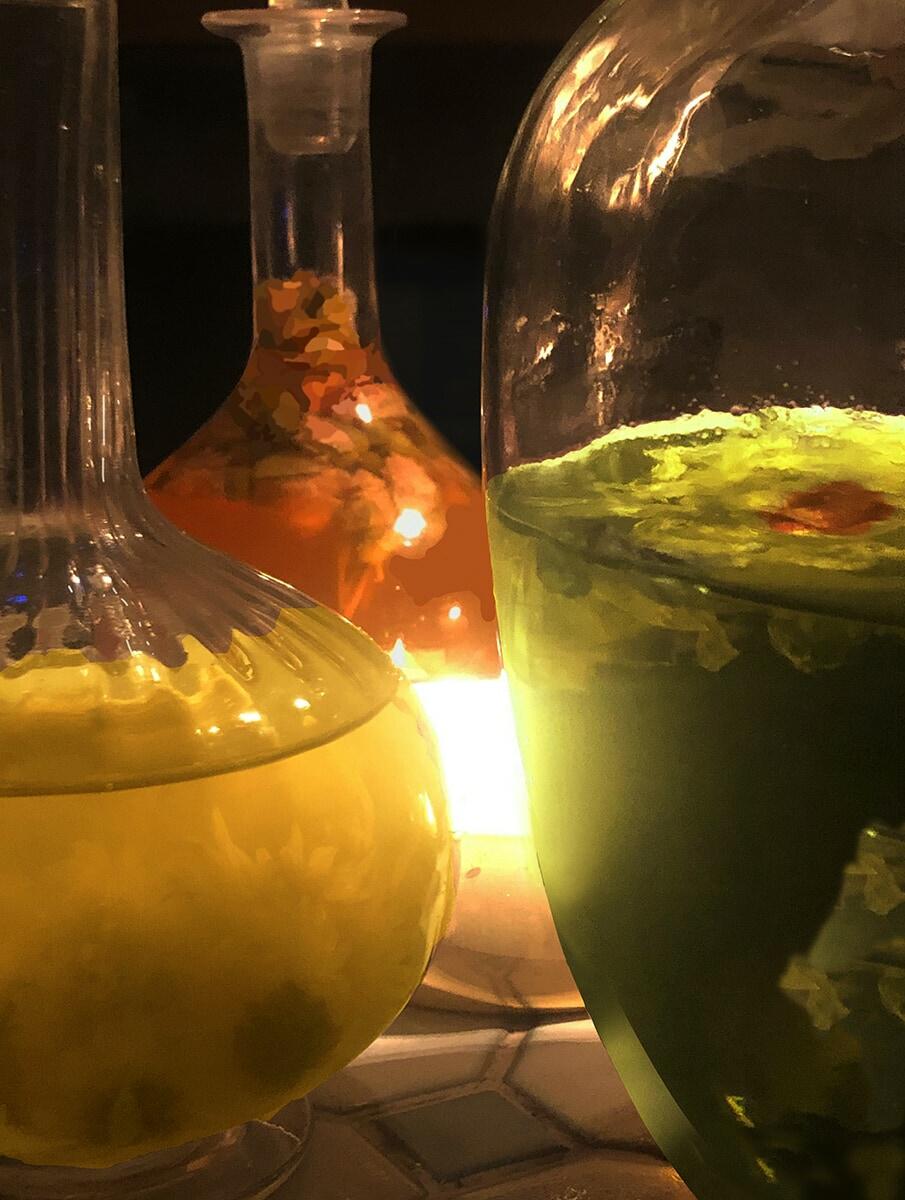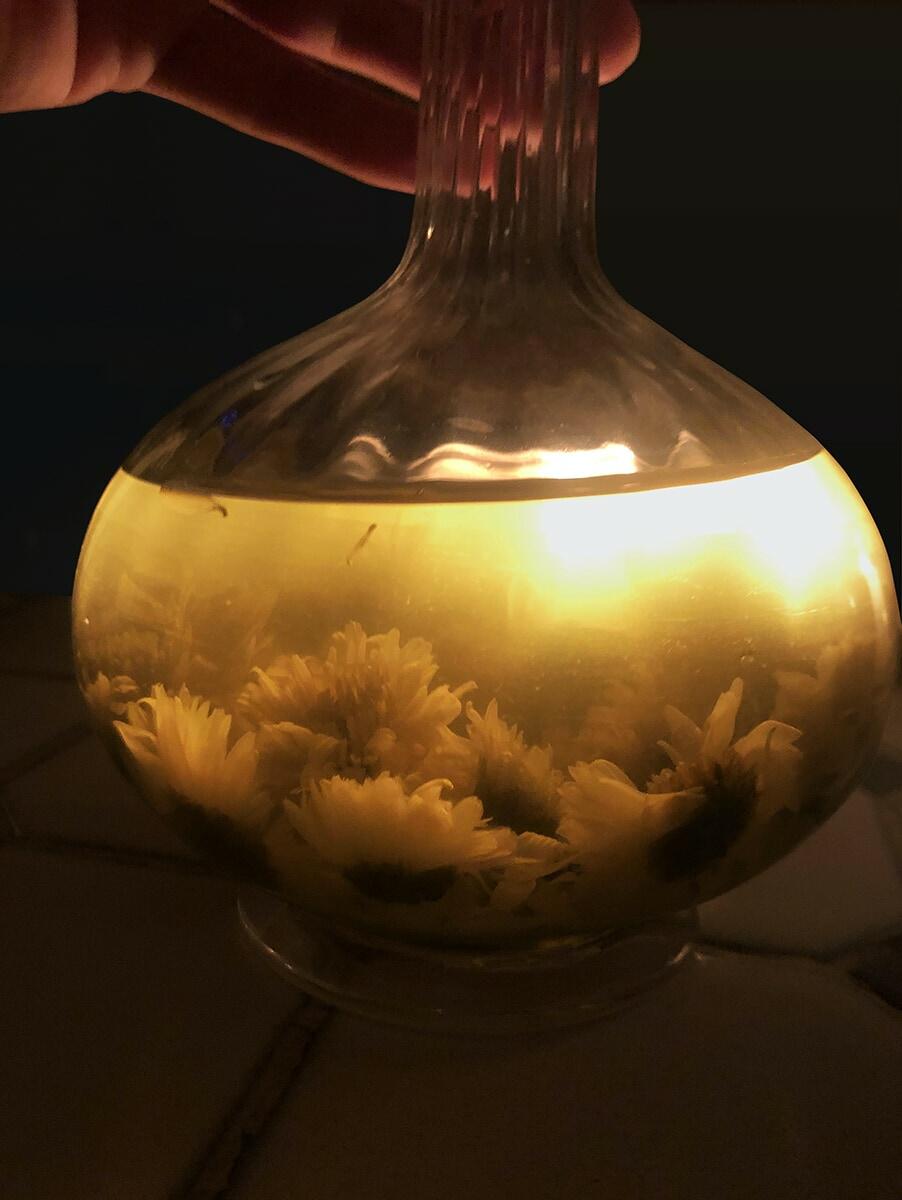The Vivant.es studio aims to “reappropriate” the city through the living and the living in the city from an eco-feminist point of view. We decided to propose a series of meetings to students, a research phase under the sign of “incubation” to prepare the ground and the actions of the exhibition. A second confinement was the opportunity to explore new pedagogical formats and to give the floor to artists, curators, researchers and designers to apprehend their work under the angle of “care”, their embodied and emotional experiences.
We had the pleasure of welcoming Lucile Olympe Haute (artist and teacher-researcher); Carmen Bouyer (artist, educator, designer); Serina Tarkhanian (designer); Lilianna Motta (artist-botanist), the duo composed of anthropologist Marine Grand and artist Anaïs Tondeur, curators and podcaster Anne Bourrassé and Hélène Aguilar, Aniara Rodado (artist, choreographer, researcher), Phénix Brossard (actor), Kathleen Reilly (artist, craftsperson, designer) and industrial designer Arthur Donald Bouillé. These meetings took place in the form of interviews, presentations and workshops. The conversations, open to the public, were joined and enriched by Anna Bernagozzi (teacher, curator, theorist), Henriette Waal (artist, designer, teacher), Ines Geoffroy (exhibition programmer) and Eric Loret (journalist and critic). This studio was conceived to think about our relationship with the living, seen as a partner in urban care.
A question then emerged: how to apprehend the living, once again inaccessible? How do designers and witches approach the question of ‘care’ and their relationship to the living?
We have set up particularly stimulating online meetings. A way of observing and understanding the living without having access to the field. A privileged space, allowing us to remain in contact with the cultural scene for a few weeks. Meetings that are nevertheless at a distance, a distant relationship, relative because it is also intimate. An intimacy echoing the last intervention of the rencontres Vivant.es dedicated to fiction, in which Arthur Donald Bouillé intervened. In “Froth on the daydream”, Boris Vian’s character’s relationship with cancer is played out through a metaphor of the living, the water lily grows in Chloé’s lungs as the disease progresses. Arthur Donald Bouillé extends Vian’s metaphor with “Thinking experience”, three objects to help accompany cancer patients. The first object in the collection houses a tumour sample, with which the user is encouraged to interact: this relationship is manifested by a luminous response that varies according to the patient’s voice. By putting technology at the service of healthcare, Arthur Donald Bouillé questions our relationship with the disease through the use of intermediary objects that establish an intimate framework for visualising, materialising and perceiving cancer. For Arthur Donald Bouillé “It is a dialogue with oneself, with the other than human, the object is therefore a receptacle for the user’s words as much as it plays the role of intermediary between the user and the embodiment of his illness”. If it proposes new ways of apprehending pathology, through the sensitive and poetic medium, these objects of an ambiguous nature are also situated at the frontier of speculative and critical design, in the tradition of Dunne & Raby. These instruments are also a means of critiquing the asepticisation of medical devices and questioning the approach of the industrial designer and the wider Western techno-scientific culture.
This observation led to the research of the Canadian designer Serina Tarkhanian, for whom the medical institution imposes a passive and standardised relationship with the patient, the only ways of understanding medicine and knowledge existing under the control of scientific protocols and methods. Her project co-healing: an institutional reform for caring with proposes a collective and participative experience of care. The lung microbiota exchange tool aims to enable a reciprocal and secure exchange between patients’ microbiomes, where each person can become a donor and a recipient. Her project is also a relevant way to rethink the experience of care through a social and relational design approach, favouring warm materials and colours that revive artisanal and ancestral forms and processes to renew the codes of a depersonalised laboratory aesthetic in force in hospitals.
If design seems to be a way of questioning the western medical and scientific apparatus, witchcraft is also a place of experimentation to propose medicinal alternatives.
Aniara Rodado, artist, choreographer and researcher, considers care through collective and performative experiences. In the field of bio-hacking and domestic witchcraft, Aniara Rodado, sets up experiments where multi-specific and multi-sensorial relationships are played out. Her poetic, political and embodied commitment considers the decolonisation of bodies and plants, from a trans-feminist position. By collaborating with the Gynepunk collective, she works to make gynaecological knowledge accessible and for the empowerment of female bodies from the pharmaceutical industry. In the framework of her doctoral thesis, Aniara Rodado proposes alternatives to gynaecological care by reviving ancestral Mayan knowledge of plants, in particular with the cream for stealing. The recognition of alternative, non-labelled or witchcraft knowledge allows us to redefine our alliances with the living through practices, and also through more egalitarian means of expression. The lexical heritage of modern science also contributes to distancing ourselves from the relationship established with other species.
Lucile Haute renews the lexicon of witchcraft by mobilising its narrative and political content. Her Cybersorcery Manifesto and its neo-pagan rituals become the support of an animist techno-feminist activism. Lilianna Motta’s work also works to move the life sciences towards a more inclusive lexicon. Lilianna Motta, participates in a relational ecology by working for the protection and conservation of polygons, these rhizomic plants that are blacklisted by their taxonomy, considered as “invasive” or “weeds”. If we must be careful to evolve the tools, instruments, and terms for approaching care and the living, “what is salvific is that in the forms of enquiry, the sciences have simultaneously invented styles of knowledge that are of another order: knowledge that restores to the living their intrinsic animation, knowledge that reanimates. This is what we need in a culture of the living: knowledge that is woven into the other dimensions of sensitivity, thought and practice”.
The media of expression can participate in the emancipation of the living and redefine the associated hierarchies. Ritual, manifesto and fiction can all be used to create new alliances. Collective and interspecific modes of survival echoing the Chtulucene of Donna Haraway, philosopher of science and biologist, a concept where the biological, the technological, the human, the non-human cohabit through new associations.
By reappropriating terms, knowledge and tools, designers and witches can contribute to the development of more inclusive and empathetic practices, with the aim of reconsidering and reweaving our relationships with the living and the way we think about and care for the living. By becoming spokespersons for this reappropriation, they can thus participate in modifying the site of destruction, as well as be modified by this reappropriation.
References:
Anthony Dunne and Fiona Raby, Speculative Everything. Design, Fiction, and Social Dreaming, Cambridge–London: The MIT Press, 2014.
Emilie Hache (ed.), Reclaim. Recueil de textes écoféministes choisis et présentés par Emilie Hache, Paris: Cambourakis, 2016.
Donna Haraway, Staying with the Trouble: Making Kin in the Chtulucene, Durham: Duke University Press, 2016.
Baptiste Morizot, Nouer culture des luttes et culture du vivant, in “Socialter”, hors-série n°9, 2021.
Starwhak, Rêver l’obscur: femmes, magie et politique, Paris: Cambourakis, 2015.
Boris Vian, L’écume des jours, Paris: Le livre de poche, 1996.
